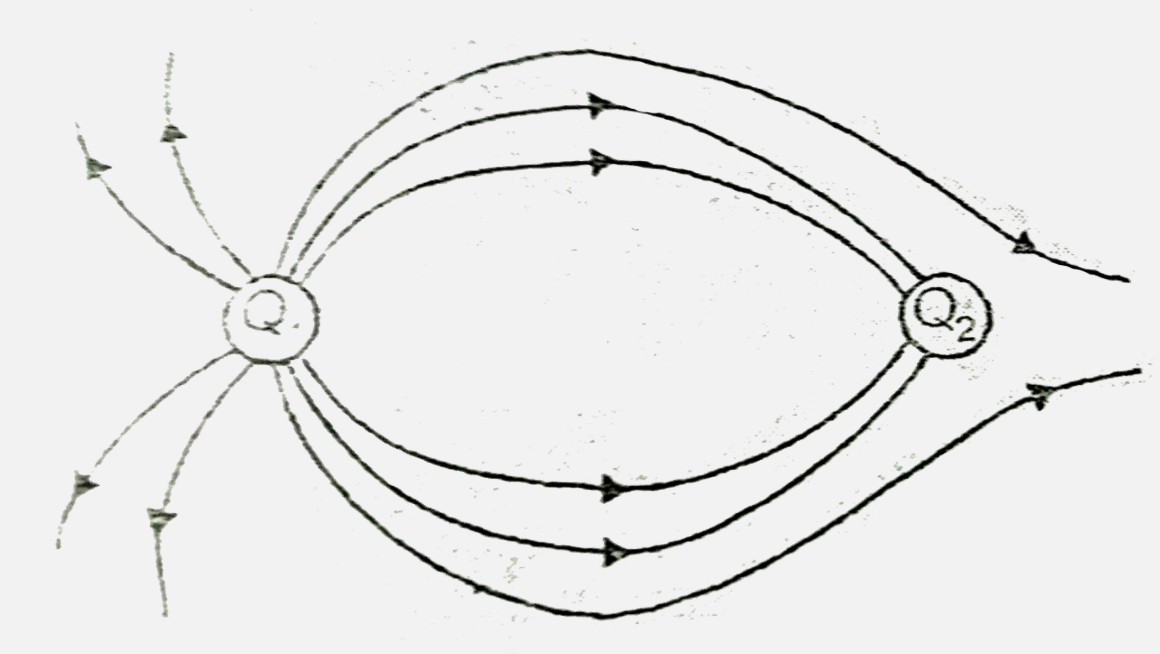If "q1+q2=q" ,then the value of the ratio "q1q" ,for which the force between q1 and "q2" is maximum is
0.25
0.75
1
0.5
The correct Answer is:D
Let r be the distance between q1andq2
According to Coulomb.s law the force between q1andq2 is
F=14πε0q1q2r2=14πε0q1(q−q1)r2 (∴q1+q2=q)
For F to be maximum dEdq1=0 , as q and r are constants
∴ddq1[14πε0r2(q1q−q21)]=0
q=2q1=0[As14πε0r2≠0] ∴q1q=12=0.5
Topper's Solved these Questions
- ELECTRIC CHARGES AND FIELDS BOOK - DISHA PUBLICATIONCHAPTER - ELECTRIC CHARGES AND FIELDS EXERCISE - Exercise - 2 : Concept applicator
24 Videos
- ELECTRIC CHARGES AND FIELDS BOOK - DISHA PUBLICATIONCHAPTER - ELECTRIC CHARGES AND FIELDS EXERCISE - Exercise - 2 : Concept applicator
24 Videos
- DUAL NATURE OF RADIATION AND MATTERBOOK - DISHA PUBLICATIONCHAPTER - DUAL NATURE OF RADIATION AND MATTEREXERCISE - EXERCISE -2 : CONCEPT ALLPLICATOR
30 Videos
- ELECTROMAGNETIC INDUCTION BOOK - DISHA PUBLICATIONCHAPTER - ELECTROMAGNETIC INDUCTION EXERCISE - EXERCISE - 2 : Concept Applicator
29 Videos
Similar Questions
When two charges q1andq2 are kept at some distance apart, force acting between these charges is F. If a third change q3 is placed quite close to q3 is placed quite close to q2 what will happen to the force between q1andq2 ?
View SolutionLooking at the various electric lines of forces between charges Q1 and Q2, find the value of Q1Q2.

View Solution
Knowledge Check
Three charged paricles are placed on a straight line as shown in fig. q1 and q2 are fixed but q3 can be moved. Under the action of the forces from q1,q2 and q3 is in equilbrium. What is the relation between q1 and q2.
 Aq1=4q2Bq1=−q2Cq1=−4q2Dq1=q2
Aq1=4q2Bq1=−q2Cq1=−4q2Dq1=q2The value of charge q1,q2andq3 as shown in the figure are
 Aq1=32μC,q2=24μC,q3=−8μCBq1=48μc,q2=16μC,q3=+8μCCq1=32μC,q2=24μC,q3=+8μCDq1=3μC,q2=4μC,q3=+2μC
Aq1=32μC,q2=24μC,q3=−8μCBq1=48μc,q2=16μC,q3=+8μCCq1=32μC,q2=24μC,q3=+8μCDq1=3μC,q2=4μC,q3=+2μCThree equal charges are placed on the three corners of a square. If the force between q1 and q2 is F12 and that between q1 and q3 is F13, then the ratio of magnitudes (F12/F13) is
A1/2B2C1/√2D√2
Calculate Q1,Q2andQ3,

View SolutionThree point charges q1=q,q2=qandq3=Q are placed at points having poisition vetors →r1,→r2 and (→r1+→r2) respectively. It is known that |→r1|=|→r2|=→r. The net electrostatic force on q3 is √3 times the force applied by either of q1 or q2 on q3. find →r1⋅→r2.
View SolutionA charge q1 exerts some force on a second charge q2 If a third charge q3 is brought near q2, then the force exterted by q1 on q2
View SolutionThreee charges +Q1,+Q2 and q are placed on a straight line such that q is somewhere in between +Q1and Q2. If this system of charges is in equlibirium what should be the magnitude and sign of charge q?
View SolutionThree charges are placed as shown in fig. the magnitude of q1is2.00μC, but its sign and the value of the charge q3is+4.00μC, and the net force on q3 is entirely in the negative x-direction

As per the condition given in the problem, the sign of q1 and q2 will be
View Solution
